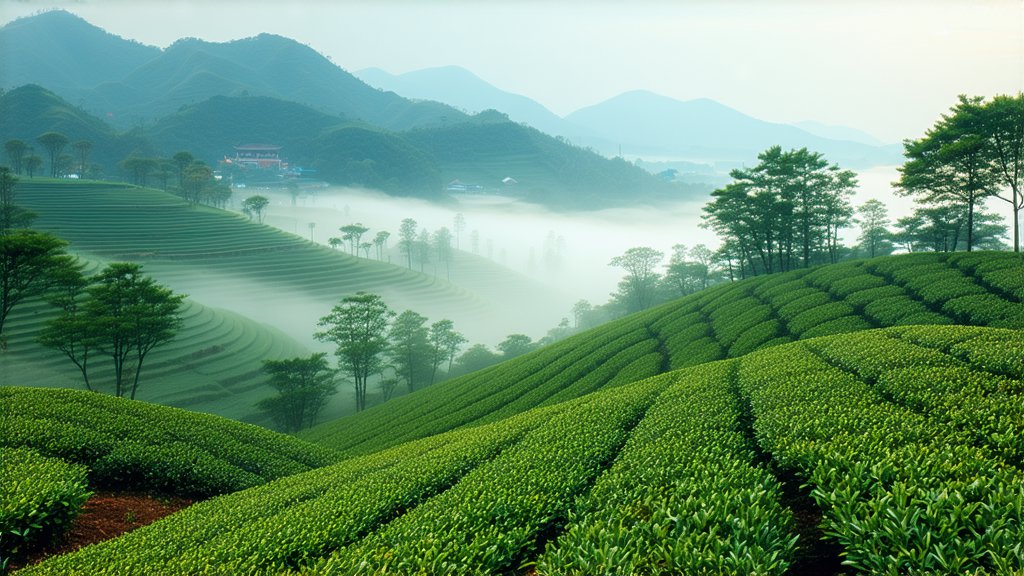
Nestled within the lush landscapes of Fujian Province, China, lies a treasure that has captivated tea enthusiasts for centuries—Silver Needle White Tea. This exquisite variety, also known as Baihao Yinzhen, stands as a testament to the artistry and tradition inherent in Chinese tea culture. As we embark on an exploration of this ethereal beverage, we delve into its storied past, diverse varieties, meticulous production process, and the nuanced art of its appreciation.
A Glimpse into History
White tea's origins trace back over two millennia, with historical records indicating its presence during the Tang Dynasty (618-907 AD). However, it was during the Song Dynasty (960-1279 AD) that white tea gained prominence, becoming a favored choice among emperors and scholars alike. The Silver Needle variety, specifically, emerged as a symbol of purity and refinement, often reserved for imperial courts and high-ranking officials. Its name, translating to "Silver Needle," reflects not only its visually striking appearance but also its status as a premium, rare delicacy.
Varieties within the Genre
While Silver Needle is the most renowned representative of white tea, Fujian's terroir nurtures several other notable varieties under this category. Among them are:
- White Peony (Bai Mudan): Comprising a bud and one or two young leaves, this tea offers a balance between the subtle sweetness of Silver Needle and a more robust character.
- Gong Mei (Tribute Eyebrow): Named after its long, slender leaves resembling eyebrows, Gong Mei presents a fuller flavor profile with hints of melon and honey.
- Shou Mei (Old Tree White Tea): Harvested from older tea trees, Shou Mei boasts a deeper complexity, often exhibiting notes of dried fruit and a lingering sweetness.
Each variety showcases the diversity and adaptability of the Camellia sinensis plant, particularly in the unique climate and soil conditions of Fujian.
The Art of Crafting Silver Needle
The creation of Silver Needle White Tea is a labor-intensive process that emphasizes minimal processing to preserve the natural essence of the tea leaves. Here’s an overview of the traditional steps involved:
- Handpicking: Only the youngest buds, which are covered in fine white down (known as 'silver hairs'), are carefully handpicked before the leaves fully unfurl. This selective harvest ensures the highest quality and imparts a distinctive sweetness to the tea.
- Withering: The freshly picked buds are spread thinly on bamboo mats and left to wither naturally under the sun or in shaded areas. This step reduces moisture content while allowing enzymatic activity to commence, initiating the transformation of catechins into theaflavins and thearubegins, contributing to the tea's golden color and mild flavor.
- Drying: Following withering, the tea undergoes further drying either through sun exposure or low-temperature ovens. This final drying phase solidifies the tea's flavors and aromas, ensuring longevity without refrigeration.
- Sorting and Packaging: The dried Silver Needle is meticulously sorted to remove any imperfections, then packaged in airtight containers to maintain freshness.
Savoring the Subtleties: A Guide to Appreciation
To truly appreciate the elegance of Silver Needle White Tea, one must engage in a mindful tasting ritual that honors its delicate nature. Here’s how to embark on this sensory journey:
- Preparation: Use a clear glass teapot or a Gaiwan (a Chinese tea cup with a lid and saucer) to observe the graceful dance of the tea leaves as they infuse. Rinse the vessel with hot water to warm it up.
- Water Temperature: Use water heated to approximately 175°F (80°C). Avoid boiling water as it can scorch the tender buds and extract bitter compounds.
- Leaf Quantity: For every 6 ounces (180 ml) of water, use about 1 teaspoon (2 grams) of Silver Needle. Adjust according to personal preference for stronger or lighter brews.
- Infusion Time: Steep for 2-3 minutes. Oversteeping can lead to astringency, so it's best to experiment until finding the perfect balance.
- Observation: Admire the pale yellow liquor, reminiscent of sunlight filtering through morning mist. Note the subtle fragrance, often described as floral with hints of grass and honey.
- Tasting: Take small sips, allowing the tea to coat your palate. Experience the initial sweetness followed by a gentle, lingering finish. Pay attention to any nuances of complexity, such as vegetal notes or a whisper of fruitiness.
- Multiple Infusions: Silver Needle is known for its ability to yield multiple infusions, each revealing different facets of its character. Gradually increase steeping time for subsequent brews.
Conclusion
Fujian's Silver Needle White Tea embodies the essence of simplicity and purity, offering a window into China's rich tea heritage. From its ancient roots to its modern-day allure, this tea invites us to slow down, savor each moment, and appreciate the intricate interplay between nature and human craftsmanship. As you raise your cup to your lips, may you find solace in the delicate whisper of the Silver Needle, a reminder of life's fleeting yet profound beauty.